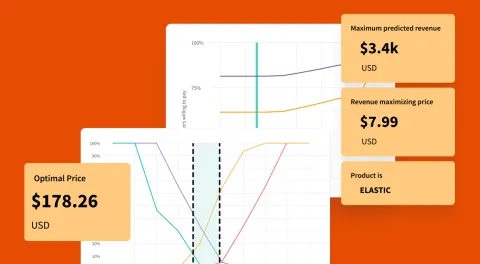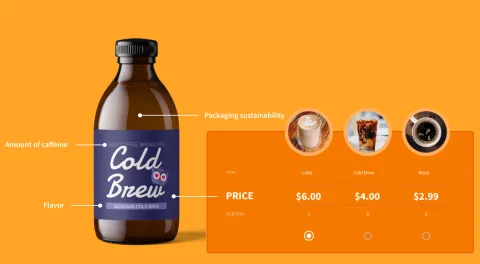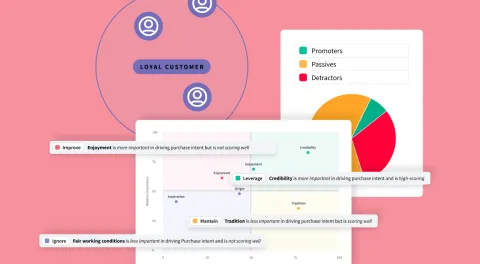Balancing Speed, Cost, and Quality in a Changing Landscape
The world of consumer insights is undergoing a radical transformation, with technology leading the charge. AI-enabled research is revolutionizing how brands understand and respond to consumer needs, moving from slow, traditional methods to agile, real-time decision-making.
Recently, industry leaders Tim Lawton, Co-CEO of SightX, Tim Joyce, Principal at ZS, a global marketing consulting firm, and Jason Levine, CMO of PIM Brands, explored the power of AI-enabled insights and how they’re reshaping the market research landscape. Their conversation uncovered key lessons on technology, business transformation, and the human element in unlocking deeper consumer understanding.
The Challenge: Keeping Up With The Consumer
Consumer behaviors and preferences have always evolved, but the complexity of their choices has accelerated exponentially. From what, where, and how they shop, brands face a new challenge: gathering insights at the speed of consumer change.
Traditional research methods, such as: surveys, ad and concept testing, preference testing, pricing research, and others remain essential to really understand the full breadth of who your ideal consumer segment should be. However, their time-consuming nature, and potentially high costs, often make it difficult for brands to keep pace and under budget. The real casualties are margins and the bottom line.
This is where a comprehensive, automated insights platform like SightX, comes into play.
The Role of AI in Consumer Insights
From “agile” to “AI”, there have been a lot of buzzwords in the research industry in recent years. But not adopting technology, including artificial intelligence features and capabilities, is not an option. Jason, a seasoned marketing executive with extensive experience in the consumer goods industry, urged other brands leaders not to be left behind because there is no putting the genie back in the bottle now. It is more than just automation. AI –and technology broadly– has become an enabler of deeper, faster, and more cost-effective insights. When integrated correctly, AI helps businesses:
- Scale analysis of consumer data and feedback
- Analyze qualitative consumer sentiment in real-time
- Identify key behavioral patterns quickly
- Enable faster decision making in order to take action quicker
According to Lawton, the key to success isn’t just adopting AI for the sake of it, but ensuring it aligns with company culture, processes, and strategic goals.
A Real-World Case Study: PIM Brands' Transformation
PIM Brands, the company behind household favorites like Welch’s Fruit Snacks and Sun-Maid Milk Chocolate Raisins, recognized that their competition wasn’t just other fruit snacks, it was the broader kids’ snacking category. Traditionally, mapping this competitive shift would have required extensive research over 9-12 months. By engaging with ZS and their deep consumer sector expertise, and unlocking the power of the SightX platform, they achieved these insights in weeks.
With SightX's advanced platform, PIM Brands could:
- Analyze consumer ratings and reviews to identify organic trends
- Pinpoint key snacking motivations (e.g., functional nutrition vs. indulgence)
- Rapidly test new product concepts and iterate in real-time
- Identify and understand unique consumer segments
Instead of waiting for lengthy reports, PIM Brands was already conceptualizing new products and preparing for industry events while traditional methods would still be collecting data.
The Power of Agile Insights
1. Removing the “Translation” Step Between Data and Action
Historically, researchers have had to translate survey data into consumer-friendly insights, adding an extra layer of interpretation (and time!). The SightX platform removes this step, offering a more intuitive and direct understanding of consumer sentiment, enabling brands to act faster and more confidently.
2. Technology Alone Isn’t Enough—Transformation Is Key
Many companies are excited about the potential of technology and its transformative impact on their business, but real change requires more than just adoption of a new capability. Organizations must also evolve both their people and processes. Without a corresponding shift in business operations, the adoption for adoption’s sake is potentially a fool’s errand.
3. Agile Insights Foster a Culture of Action
AI-enabled research enables companies to move quickly, take action, and learn continuously. Instead of getting stuck in lengthy justification or stage-gate processes, the most effective organizations embrace a “progress over perfection” mindset—learning through execution rather than excessive planning.
4. Real-Time Insights Mean Getting Answers When They Matter
Speed is valuable, but real-time insights aren’t just about being fast, they’re about having the right information at the right moment allowing companies to act with confidence, making critical decisions at the perfect time without unnecessary delays.
5. Human Expertise Still Drives the “Aha” Moments
AI can surface patterns, correlations, and significant data points, but it’s the human element that identifies the real insight. Technology provides the foundation, but researchers still play a crucial role in determining what’s truly important and actionable. Technology will uncover important findings in both quantitative and qualitative data sets, but the human in the equation is still the one to determine if those are actually insightful, and if so, when and how to take action.
6. Adapt or Get Left Behind
The future of research is clear: embrace technology and agility or risk becoming obsolete. Companies that fail to integrate AI-enabled insights into their processes will fall behind competitors who move faster, learn through action, and continuously evolve. We’re still doing traditional things, but in a new and improved way.
7. Focus on Business Problems, Not Just Technology
To successfully drive change, insights professionals must frame AI as a solution to pressing business challenges, not just as a shiny new tool. Business leaders care about revenue growth, profitability, and market opportunity. Positioning AI-enabled insights as a way to accelerate these outcomes makes adoption a no-brainer.
Final Thought: Insights as a Strategic Growth Engine
The insights function has never been more critical. AI-enabled research is expanding the seat at the table for insights leaders, giving them a stronger voice in business strategy. With always-on data and AI-enabled analytics, insights professionals are no longer just providing reports, they’re driving real business transformation.
The key is not just adopting AI but embedding it into the very fabric of decision-making. Companies that do so will unlock new levels of growth, innovation, and competitive advantage in an increasingly complex marketplace.



